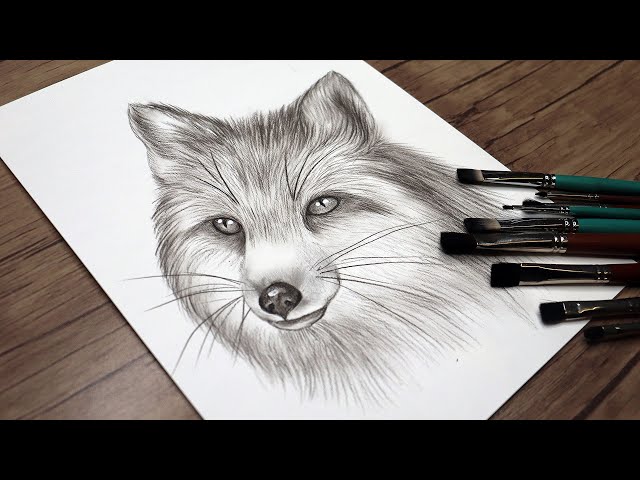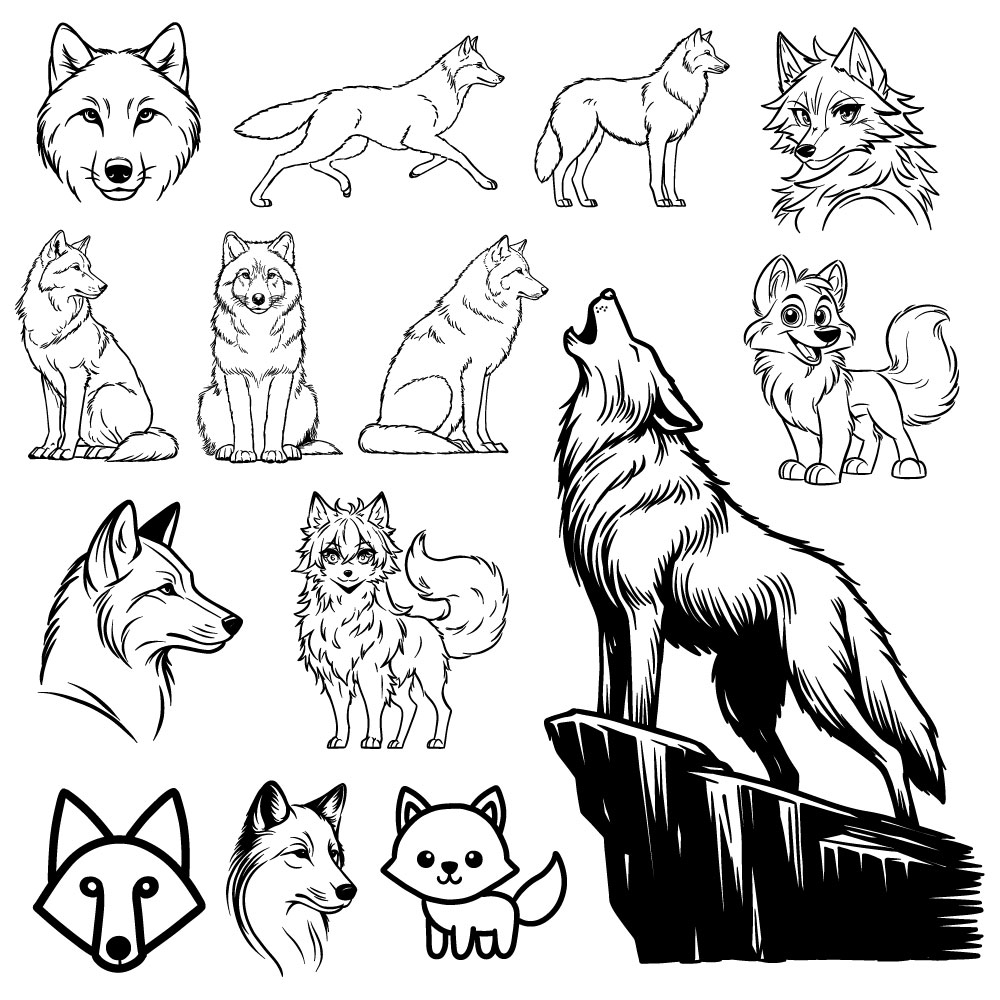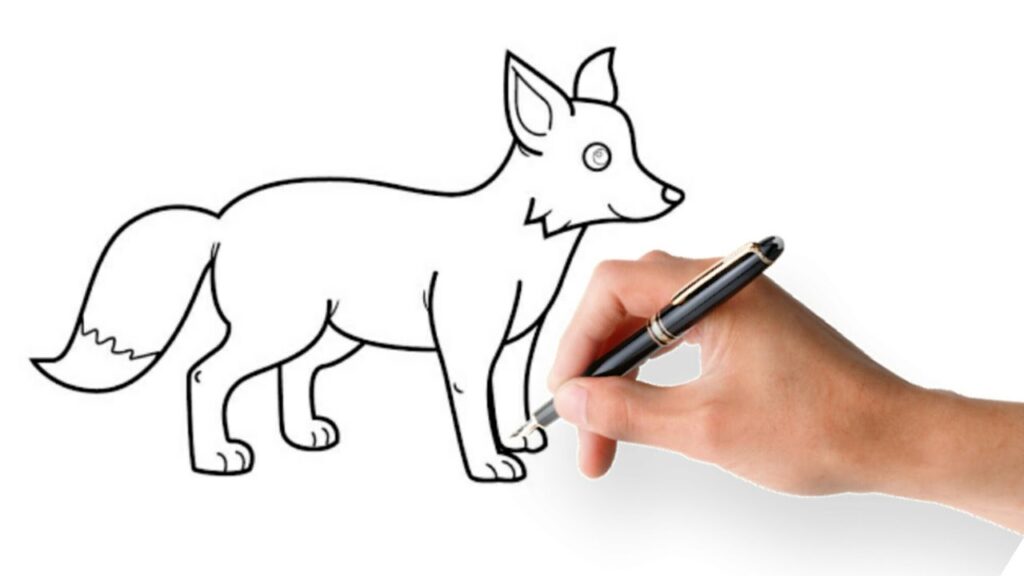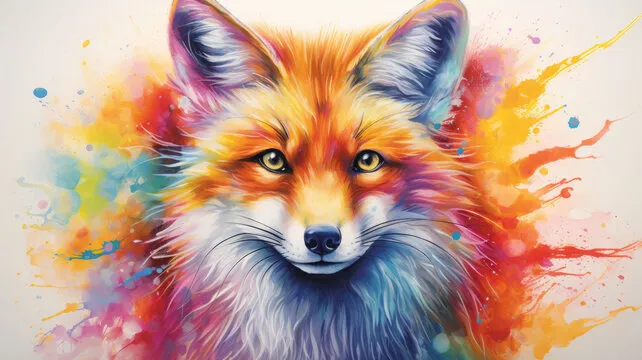Drawing:1enzi6g2cvg= Fox – A Complete Guide to Mastering Fox Drawing!

Drawing a fox is a rewarding experience, combining creativity and skill. Foxes make captivating subjects with their majestic shape, alert posture, and intricate fur patterns. This guide to drawing:1enzi6g2cvg= fox breaks the process into simple, actionable steps. Whether a beginner or an experienced artist, you’ll learn to capture the fox’s elegance and intelligence quickly. Master anatomy, shading, and fur techniques to bring your fox illustrations to life.
Stay tuned as we explore Drawing:1enzi6g2cvg= Fox, guiding you to create stunning fox illustrations step by step!
What is Drawing:1enzi6g2cvg= Fox?
Drawing:1enzi6g2cvg= fox is a unique art method that captures foxes’ beauty and distinct characteristics. It blends traditional and modern techniques to create detailed, lifelike, or stylized illustrations. This approach focuses on precise steps, making it accessible for beginners and experienced artists.
The method ensures professional-quality results by emphasizing anatomy, fur texture, and shading. It allows artists to showcase the elegance and intelligence of foxes in their work. Whether aiming for realism or creativity, Drawing:1enzi6g2cvg= fox offers a comprehensive guide to mastering fox art.
Tools and Materials for Drawing:1enzi6g2cvg= Fox – Gear Up!

Using the right tools is essential for creating detailed, lifelike fox drawings. You can achieve precision, texture, and flawless shading with the right combination of materials. Below is an expanded list of materials to elevate your Drawing:1enzi6g2cvg= fox illustrations:
Pencils:
- HB Pencil: Perfect for initial sketches and drafting the foundation of your drawing without leaving harsh lines.
- 2B Pencil: Excellent for mid-level shading and adding outlines that define crucial features.
- 6B Pencil: This pencil is best for creating rich, dark tones, deep fur textures, and adding depth to shadows.
- 4H Pencil: Ideal for highly light, clean lines that are easy to erase later.
- Mechanical Pencil: Great for intricate details such as whiskers, fur edges, and fine lines.
Erasers:
- Kneaded Eraser: Flexible for removing graphite from large areas while maintaining clean highlights. It can also be shaped to erase specific details.
- Precision Eraser: Helps refine sharp edges around the fox’s features, such as eyes or ears.
- Electric Eraser: A high-precision tool that erases even the most minor areas with control, perfect for acceptable corrections.
- Vinyl Eraser: Excellent for solid erasing without smudging or damaging the paper.
- Sand Eraser: Useful for removing stubborn marks or creating unique textures on textured paper.
Paper:
- Smooth Paper: Ideal for capturing fine details like fur strokes and subtle shading with pencils.
- Textured Paper: Adds dimension to your drawing, especially for fur patterns and shading variations.
- Bristol Board: Offers a smooth, durable surface that handles layering and erasing well.
- Watercolor Paper: Adding color with water-based mediums ensures minimal warping and supports vibrant results.
- Toned Paper: Provides a neutral background to enhance contrast and add a professional touch to your work.
Blending Tools:
- Blending Stumps: Essential for creating soft gradients, especially on fur and shadowed areas.
- Tissues or Brushes: Smooth out pencil shading without leaving streaks for a polished finish.
- Cotton Swabs: Handy for blending small, tight spaces around the eyes or nose.
- Soft Cloth: Helps blend large areas seamlessly while maintaining paper quality.
- Silicone Blenders: Durable tools for blending graphite and charcoal, offering control over fine textures.
Optional Materials:
- Colored Pencils: Use a set with varied tones, like oranges, browns, and whites, to bring your fox illustration to life.
- Markers: Alcohol-based markers can add smooth, bold colors and gradients for a stylized look.
- Digital Tablets: Tools like Procreate or Photoshop allow for experimentation with layers, brushes, and colors, giving you more control over your artwork.
- Graphite Powder: Perfect for large shading areas or subtle gradient effects on fur or background.
- Fixative Spray: Preserves your completed drawing, preventing smudging and maintaining its original look.
With these tools and materials, you’ll be well-equipped to create stunning and detailed fox drawings, whether traditionally or digitally.
Understanding Anatomy – Perfect Your Fox Drawings!

Understanding the anatomy of a fox is crucial for creating a realistic and visually captivating Drawing:1enzi6g2cvg= Fox These elegant animals have distinct features that set them apart and make them a favorite subject for wildlife art.
Key Features of a Fox:
- Head: The fox’s head is defined by almond-shaped eyes that convey intelligence, a long, pointed snout, and upright triangular ears that add to its alert appearance.
- Body: Foxes have a slim, agile body with a slightly arched back, emphasizing their grace and readiness for movement.
- Legs: Their long, slender legs are designed for speed and fluid motion, making them perfect for depicting dynamic poses.
- Tail (Brush): The bushy tail, known as the “brush,” often features a darker tip. This fundamental characteristic adds personality and movement to the drawing.
Using reference images to study their skeletal structure and proportions ensures your depiction is accurate and true to life. Focus on capturing the fox’s balance between elegance and agility for a realistic result.
Step-by-Step Guide to Drawing:1enzi6g2cvg= Fox:
| Step | Action | Key Tip |
| 1. Outline | Draw basic shapes: a circle for the head and an oval for the body. | Keep lines light for easy adjustments. |
| 2. Refine | Smoothly connect shapes and taper the body for sleekness. | Focus on symmetry and proportion. |
| 3. Features | Add eyes, ears, and nose with subtle fur details. | A slight tilt of the eyes adds sharpness. |
| 4. Tail | Sketch a fluffy tail with flowing lines. | Darken the tip for a realistic touch. |
| 5. Texture | Use short and long strokes to mimic fur texture. | Vary pencil pressure for depth. |
| 6. Shade | Add shadows under the body and blend smoothly. | Stick to one light source for shading. |
| 7. Finalize | Clean lines, add details like whiskers and adjust proportions. | Tiny highlights enhance realism. |
Exploring Different Styles of Fox Drawing – Get Creative!

1. Realistic Style: Bringing Foxes to Life
The realistic style emphasizes precision, focusing on anatomical accuracy and lifelike details. This approach captures the natural beauty of foxes, making it perfect for wildlife enthusiasts and professional artists. Shading, fur texture, and proportion are vital in creating a stunning, photorealistic fox illustration.
2. Cartoon Style: Playful and Creative Fox Art
The cartoon style simplifies and exaggerates features like big eyes, bushy tails, and expressive faces. It’s ideal for creating fun, approachable drawings that appeal to children and casual art lovers. This style allows you to experiment with vibrant colors and whimsical poses, bringing out the playful side of foxes.
3. Abstract Style: Bold and Artistic Fox Designs
Abstract fox drawing offers creative freedom, using bold shapes, striking colors, and unconventional designs. This style is perfect for creating unique artwork that stands out in a crowd. Artists can focus on patterns and textures rather than realism, turning the fox into a symbolic or decorative element.
Advanced Techniques for Realism in Drawing:1enzi6g2cvg= Fox:
Dynamic Lighting:
- Use light and shadow to make your drawing appear three-dimensional.
- Place the light source consistently for natural shading.
- Side lighting creates soft shadows for a realistic look.
- Backlighting adds drama, outlining the fox’s shape with highlights.
- Experiment with different angles to emphasize features like fur texture or eye depth.
Perspective Drawing:
- Practice drawing foxes from unique angles to add realism.
- Use perspective lines to show depth and dimension in poses.
- Try foreshortening techniques to create dynamic positions like crouching or leaping.
- Focus on the proportions of the legs and tail when drawing motion.
- Reference real-life fox photos or videos for natural posture and balance.
Gesture Drawing:
- Quick sketches capture the natural flow and movement of foxes.
- These studies focus on the overall pose rather than small details.
- Use curved lines to show agility in running or jumping.
- Draw multiple poses to practice capturing expressions and fluid motions.
- These exercises help improve confidence in creating lifelike drawings.
By mastering these techniques, your drawing:1enzi6g2cvg= fox will look more dynamic and engaging, keeping viewers captivated.
What Are the Common Mistakes to Avoid in Drawing:1enzi6g2cvg= Fox?

Creating a detailed and lifelike drawing:1enzi6g2cvg= fox can be rewarding, but inevitable common mistakes can hinder your progress. Understanding and avoiding these pitfalls will help you achieve professional-quality results and save time refining your artwork. Here’s a closer look at these mistakes and how to overcome them:
1. Incorrect Proportions:
One of the most frequent errors is drawing a fox with unbalanced proportions. Foxes have slender bodies, long legs, and bushy tails, all of which must be accurately depicted. The drawing may look unnatural or out of balance if the proportions are off.
How to Avoid: Use grids or reference images to maintain scale and symmetry. Sketch light guidelines to help align the body parts, ensuring the head, torso, and tail are proportional.
2. Flat Fur Texture:
A lack of texture in the fur can make your fox drawing look flat and unrealistic. Foxes are known for their thick, fluffy coat, especially on their tails and necks, which add depth and character to their appearance.
How to Avoid: Use layered strokes and vary the pencil pressure to mimic the natural flow of fur. Use quick, light strokes for short fur, while longer fur requires overlapping strokes for volume and realism.
3. Stiff Poses:
Drawing a fox in a stiff or rigid pose can take away its natural grace and fluidity. Foxes are agile creatures whose movements are often smooth and dynamic, which should be reflected in your drawing.
How to Avoid: Incorporate natural curves and fluid lines when sketching the fox’s body. Practice gesture drawings to capture motion and study images of foxes in dynamic poses, such as running or crouching.
4. Inconsistent Lighting:
Inconsistent lighting can make your drawing look flat and confuse the viewer’s perspective. Proper shading adds depth and dimension, making the fox appear more lifelike.
How to Avoid: Choose a single light source and shade accordingly. Highlight areas where light hits directly and add shadows to areas in the background or under the fox’s body. Use blending tools to smooth transitions between light and shadow.
How to Enhance Your Fox Drawings with Digital Tools?
Digital platforms like Procreate and Photoshop revolutionize fox drawing by offering advanced features such as layering, custom brushes, and precision tools. These platforms allow you to create realistic fur textures, adjust colors seamlessly, and experiment with shading techniques.

With features like masking and blending modes, digital tools empower artists to refine their work and explore creative effects. They also save time by enabling easy corrections and adjustments, giving you more freedom to experiment. Whether you want lifelike fox art or a stylized masterpiece, digital tools provide endless possibilities to bring your vision to life.
Read: Henry Morley Sands – A Legacy of Art, Innovation, and Community!
FAQ’s (Frequently Ask Questions)
1. What is the best pencil to use for drawing foxes?
Use an HB pencil for light sketches and 2B–6B pencils for shading and adding depth for fox drawings. This range offers versatility for creating realistic details and shadows.
2. How do I create realistic fur?
To achieve lifelike fur, use short strokes that follow the natural direction of fur growth. Layer these strokes while varying pencil pressure to add texture and dimension to your fox drawing.
3. Can beginners draw a realistic fox?
Absolutely! Beginners can start with basic shapes to outline the fox’s posture and gradually build details. Following a step-by-step guide and practicing regularly can make the process easier.
4. How do I draw a fox in motion?
Gesture drawing is critical to capturing a fox in motion. Focus on quick, fluid sketches and use reference images to study the natural movements of a running, leaping, or crouching fox.
5, What paper is best for fox drawing?
Smooth paper is ideal for detailed work, like precise pencil strokes, while textured paper adds depth to shading, making it great for creating realistic fur effects.
6. How can I make my fox drawing stand out?
Add personalized details like expressive eyes, dynamic poses, or creative backgrounds to make your fox drawing unique. Experiment with lighting, colors, or mixed media to showcase your artistic style.
Conclusion: Master the Art of Drawing:1enzi6g2cvg= Fox Today
Drawing:1enzi6g2cvg= fox is a rewarding journey that blends artistic skill with creativity, allowing you to capture the beauty and elegance of one of nature’s most fascinating creatures. You can create genuinely captivating artwork by understanding a fox’s anatomy, using the right tools, and applying techniques like dynamic shading and texture.
Whether you aim for lifelike realism, playful cartoon styles, or bold abstract designs, this guide offers the foundation to refine your skills and express your vision. Keep practicing, exploring new styles, and embracing your creative process; each drawing will bring you closer to mastering the art of fox illustration.
Read more:




